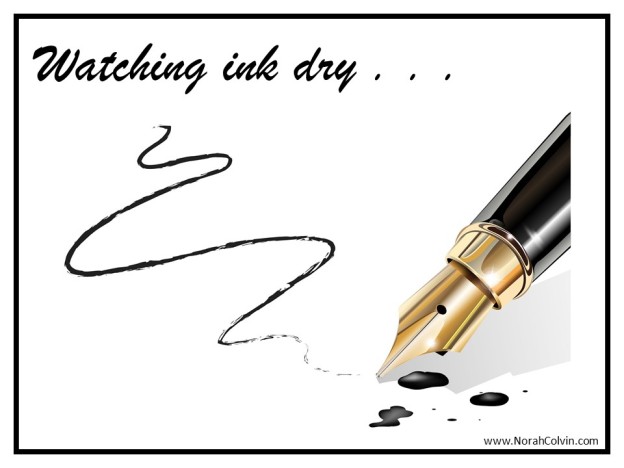Sometimes we think change occurs at an incredible pace. Other times it’s too slow–like watching paint dry. But what about watching ink dry?
This week at the Carrot Ranch, Charli Mills challenged writers to In 99 words (no more, no less) write a story about wet ink. It can be artistic, writerly or something completely off-the-wall. Go where the prompt leads.
Where would I go? To school–where else?
In my first year of school we wrote on slates (no, not on stone tablets as my children may tease).
In subsequent years, we wrote in exercise books and special handwriting books with lead pencils (which contain graphite rather than lead).
As we moved up through the grades, we still used pencils for most work, but were also introduced to pens with nibs which we dipped into inkwells recessed in our desks for handwriting or “copybook” lessons. It was important to get just the right amount of ink on the nib–too little and the nib would scratch but not sufficiently to make a readable mark–too much and the ink would run, blot and smudge.
In upper primary, we graduated to fountain pens for our copybook work. It was just as difficult to get the right amount of ink, even with the cartridge variety. Should we err and make a blot on our copybook, it was treated as a most serious offence. Luckily, our trusty blotting paper was at the ready to soak up any excess. We always had to begin writing at the top and continue down the page. There was no going back and inserting or altering something at the top, unless we were absolutely certain the ink was dry, lest we smudge the writing with our hand.
Although ball point pens, commonly called biros in my circles, had been invented–as early as 1888 according to this history, would you believe–we were not allowed to use them in school for fear our handwriting skills would deteriorate. They had their own set of ink issues too–some would fail to write, other would supply too much thick ink. Others would leave ink all over hands, or leak in pockets or bags.
Over the years, ballpoint pens improved in quality and have now replaced dip nib pens except for specialist writing, and fountain pens are considered more a luxury item. Now the concern is that the use of digital devices; such as, computers, tablets and phones will have a harmful effect upon children’s handwriting skills. I wonder were there similar concerns when papyrus replaced stone tablets; and what those concerns will be in the future, should handwriting have a future.
I didn’t wish to “blot my copybook” by responding to Charli’s prompt with a story unrelated to education or children. I hope you enjoy it.
A blot on whose copybook?
Ever so carefully, she dipped the nib in and out of the inkwell. Her tongue protruded, guiding the pen as she copied the black squiggly lines dancing across the page.
“Start at the top. Go across; then down. Lift, dip…,“ the teacher droned.
“Start at the top!” The cane stung her knuckles, sending the nib skidding across the page.
“Now look what you’ve done!” The teacher grasped the book and held it aloft, sending ink in rivulets down the page. Her thumb intercepted one, smearing another opportunity for humiliation across the page.
“Girls, this is what not to do!”

Thank you for reading. I appreciate your feedback. Please share your thoughts.


